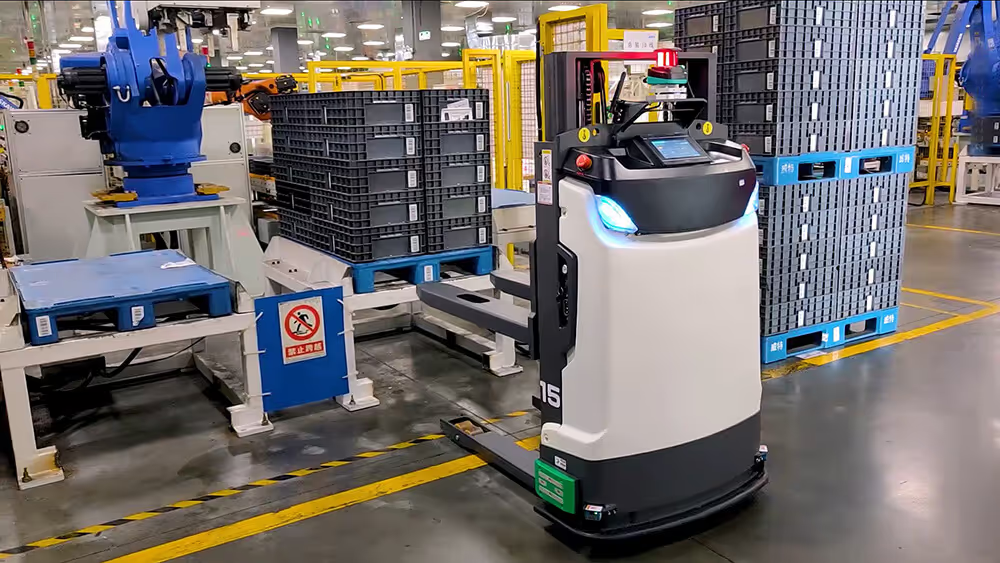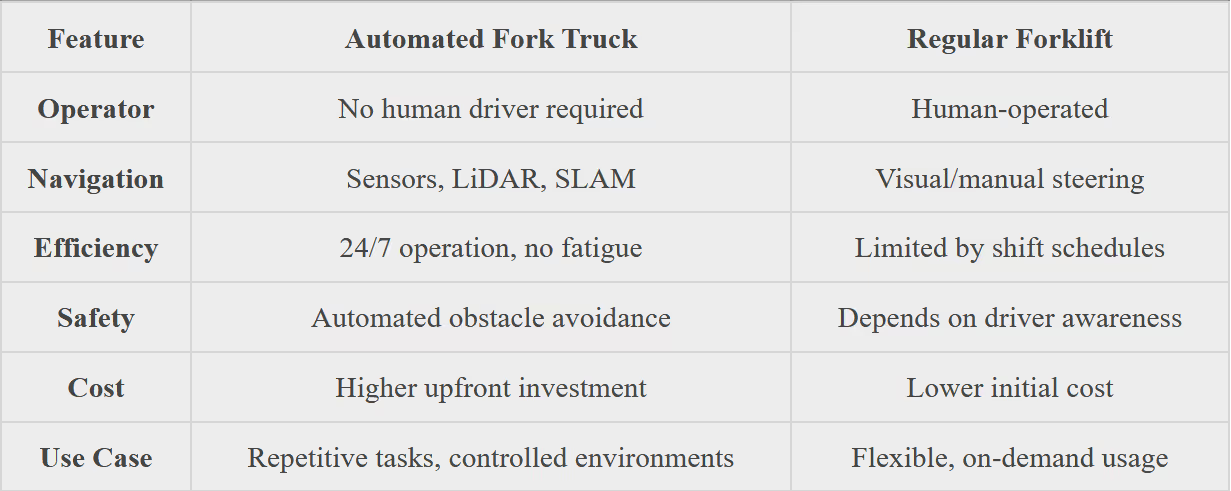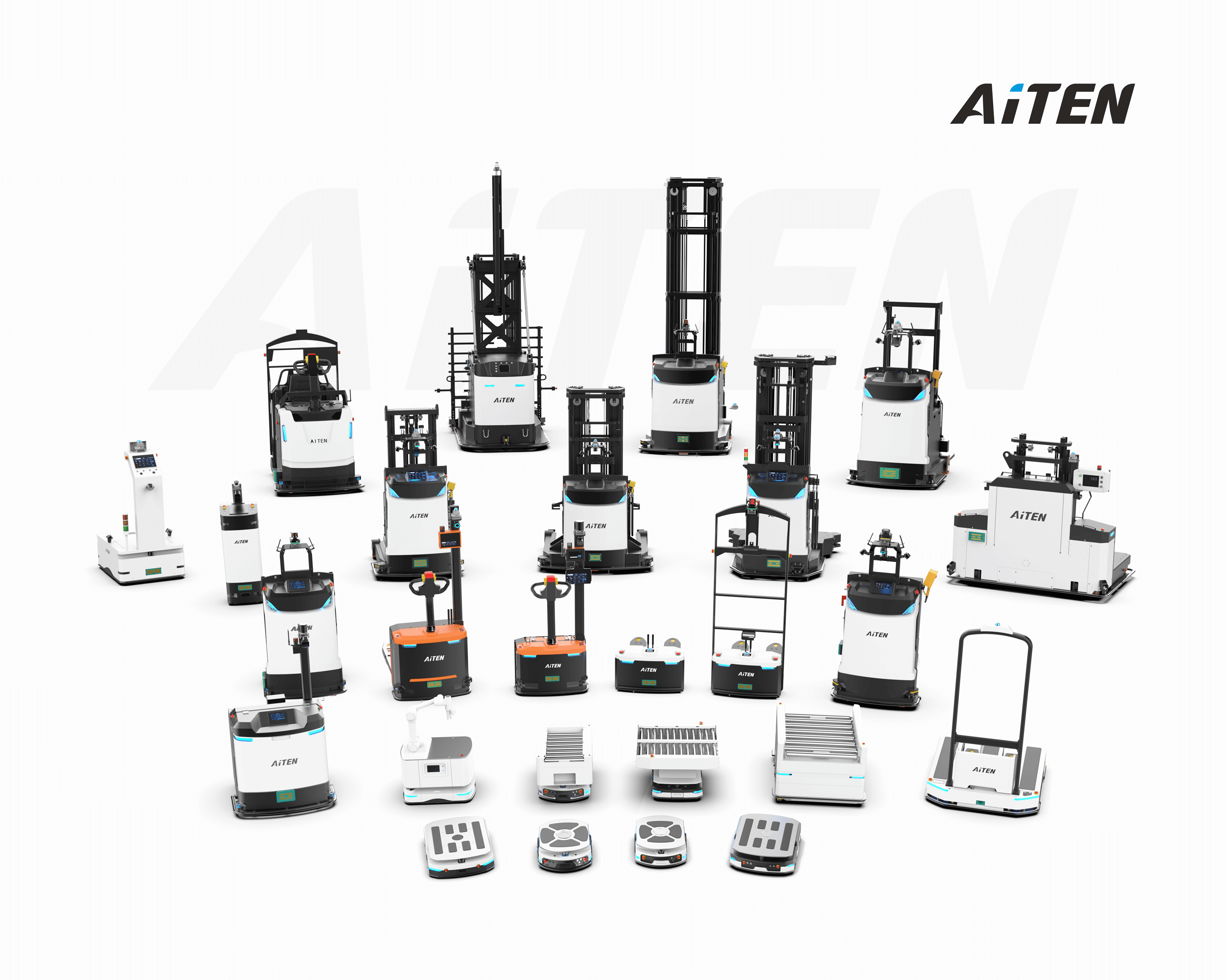What Is an Automated Fork Truck and How Does It Differ from a Regular Forklift?

In the age of smart logistics and Industry 4.0, automated forklifts are reshaping the way materials are handled in warehouses and factories. So, what is an automated forklift? How exactly is it different from the traditional forklifts we commonly see? Depending on your warehouse and industrial needs, you can choose either an automated forklift or a manual forklift.
This article will help you fully understand the advantages, disadvantages and applicable environments of these two types of equipment in terms of definitions, key differences and application scenarios.
What Is a Regular Forklift?
A regular forklift, or manual forklift, is a vehicle operated by a human driver. It is used to lift, stack, and transport materials over short distances, commonly seen in warehouses, manufacturing plants, and shipping yards.
Regular forklifts come in various types, including:
- Counterbalance forklifts
- Reach trucks
- Pallet jacks
- Order pickers
- Rough terrain forklifts
They require skilled operators and constant human control for movement, load lifting, and navigation.

Pros:
- Reduces upfront purchase costs
- Reduces ongoing maintenance costs
- Increased driver engagement and focus
Disadvantages:
- Steeper learning curve for new operators
- Higher risk of operator error due to inattention
What Is an Automated Fork Truck?
An automated fork truck, also known as an autonomous forklift, driverless forklift, or automated guided forklift (AGF), is a robotic vehicle designed to transport pallets or materials without a human driver.
These intelligent machines use technologies such as:
- LiDAR and camera-based navigation
- SLAM (Simultaneous Localization and Mapping)
- QR code or magnetic strip guidance
- Onboard sensors for obstacle detection and safety
- Fleet management systems for traffic coordination

Unlike traditional forklifts, automated versions operate based on pre-programmed routes or real-time instructions from a warehouse management system (WMS) or AGV control software.
What is an automated fork truck? How does an automated fork truck work?
Key Differences Between Automated and Regular Forklifts

Autonomous forklifts VS traditional forklifts: pros and cons
Benefits of Automated Fork Trucks
- Improved Safety: Fewer human errors and accidents.
- Higher Efficiency: Continuous operation, even during nights or weekends.
- Data Integration: Real-time tracking, reporting, and analytics.
- Consistency: Precise, repeatable movements minimize damage to goods and infrastructure.
When Should You Choose an Automated Fork Truck?
Automated fork trucks are ideal for:
- Facilities with highly repetitive material handling tasks
- Operations looking to reduce labor costs and improve safety
- Warehouses seeking to scale automation and digitalize workflows
- Environments where predictable layouts allow smooth navigation
How to Choose Between Conventional and Automated Forklifts?
1. When to Choose a Conventional Forklift
Manual forklifts are best suited:
- Companies with experienced operators
- Businesses focused on minimizing capital expenditures
- Workplaces that involve longer travel distances
- Facilities with more rugged outdoor terrain
Organizations that value precise load handling and lower maintenance costs may prefer the benefits of manual forklifts.
2. When to Choose Automated Forklifts
The advantages of automated forklifts are:
- Warehouses are hiring multiple new employees each year
- Organizations seeking faster operator onboarding
- Operations that specialize in high-speed indoor product transportation
- Facilities that need consistent performance across a variety of tasks
Choosing automated forklifts reduces training time and increases worker confidence, making them ideal for dynamic environments.
How to choose between automated forklifts and AGVs for your warehouse?
Conclusion
As logistics and manufacturing industries move toward automation, understanding the difference between automated fork trucks and traditional forklifts is essential. While manual forklifts offer flexibility and lower cost, automated fork trucks bring long-term efficiency, safety, and digital integration.
Whether you're upgrading a warehouse or planning a smart factory, evaluating your operational needs and long-term goals will help you choose the right forklift solution.
About AiTEN Robotics
As a company specialising in intelligent logistics solutions, AiTEN Robotics has consistently focused on the ‘smart factory’ scenario, deeply integrating technological innovation with industry needs. It has provided comprehensive services to over 200 manufacturing clients worldwide: Leveraging a full range of material handling robot product portfolios to cover diverse material handling scenarios, we have developed an industry-grade intelligent scheduling system to enable efficient collaboration among multiple devices. Through a comprehensive lifecycle service system spanning pre-sales planning, deployment and implementation to operations optimisation, we empower enterprises to achieve logistics intelligence transformation, continuously driving the digital upgrading and high-quality development of the manufacturing industry.
Contact us to explore automation solutions for your factory.









_%E7%94%BB%E6%9D%BF%201.avif)
.MP10S%E5%8A%A0%E9%AB%98%E6%94%AF%E6%9E%B6%20(3).png)
